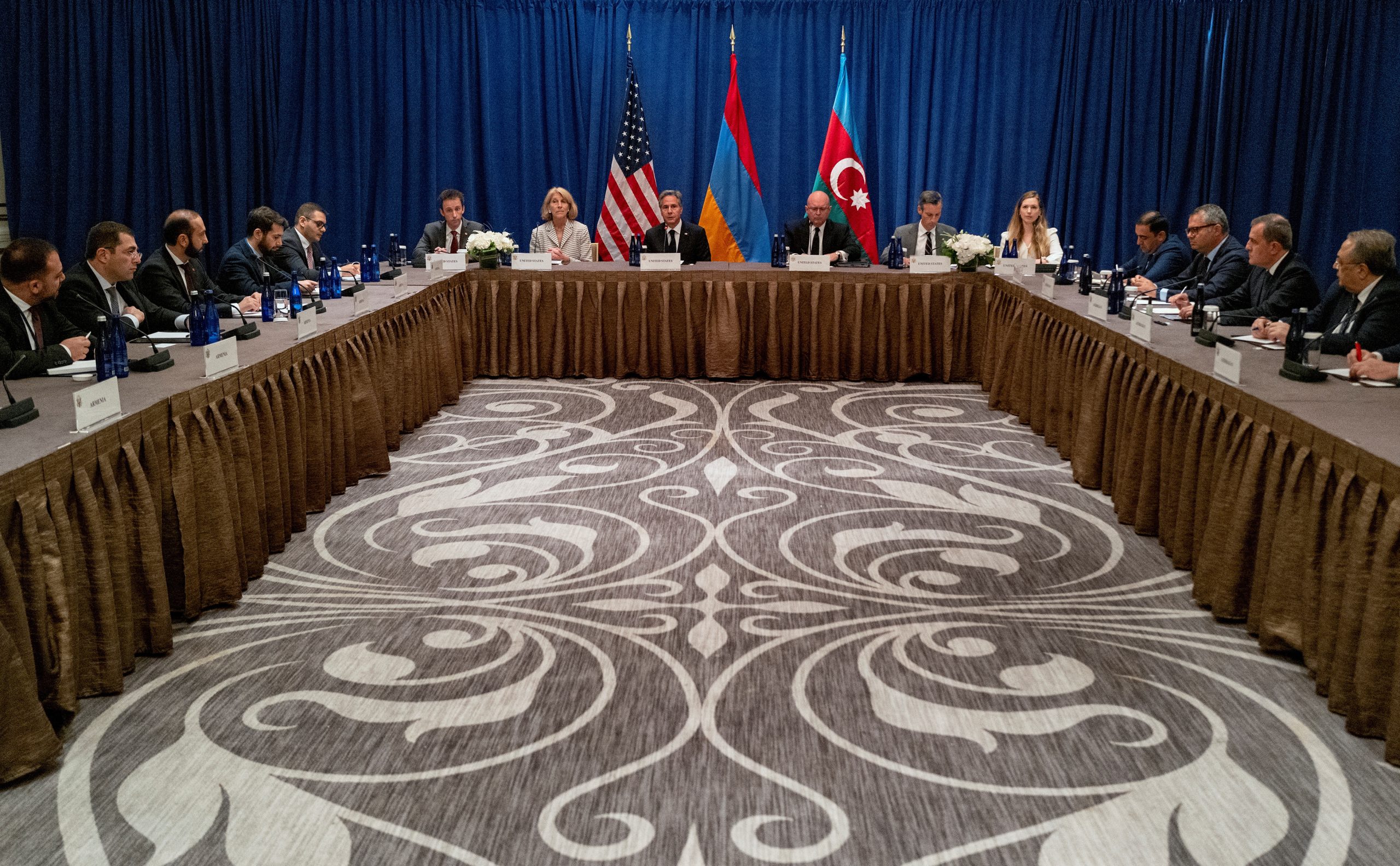
Willie R. Tubbs, FISM News
[elfsight_social_share_buttons id=”1″]
Monday, U.S. Secretary of State Antony Blinken hosted the foreign ministers of Armenia and Azerbaijan in New York in an effort to help quell the rising tensions between the two nations.
This was the first time the two sides had spoken since the outbreak of violence along the border shared by the two longtime adversaries.
Public details were scant on the meeting, but the State Department confirmed that the substance of the talks centered on finding a peaceful solution.
“Secretary Blinken conveyed condolences for the lives lost and emphasized the need to prevent further hostilities, underscoring the importance of returning to the peace process,” Department of State Spokesperson Ned Price said in a statement. “They discussed next steps, and the Secretary encouraged the sides to meet again before the end of the month.”
From Sept. 12-14, clashes erupted in the Nagorno-Karabakh region. Although the two sides reached a truce, the tense peace came after the death of hundreds, and observers around the globe were left wondering just how long the truce will last.
The idea of permanent peace between Armenia and Azerbaijan is a wonderful, but likely far-fetched idea. The two nations have been at odds for decades.
According to the Crisis Group, the Nagorno-Karabakh conflict began in 1988 as the Soviet Union continued its collapse and Armenians living in the contended region demanded Nagorno-Karabakh be ceded from Azerbaijan to Armenia. At the time, both nations were part of the Soviet Union.
The two sides fought persistently until 1994, and have fluctuated between a fragile peace and outright deadly conflict ever since.
In September 2020, Azerbaijan launched an operation to reclaim control over Nagorno-Karabakh, aided by Turkey.
Over six weeks of fighting, more than 6,700 people were killed. Azeri troops drove Armenian forces out of areas they controlled outside the separatist region and also seized broad chunks of Nagorno-Karabakh proper.
Russia brokered a peace deal on Nov. 10 that allowed Azerbaijan to reclaim control of the areas occupied by Armenian forces outside Nagorno-Karabakh for nearly three decades. Armenian forces also agreed to surrender control over significant sections of Nagorno-Karabakh.
Russia has deployed about 2,000 troops to the region to serve as peacekeepers under the deal.
During World War I, the Ottoman Empire, which was dominated by the Turkish people, engaged in a genocide against the Armenian people.
As would later be the case with the USSR, both Armenia and Azerbaijan were a part of the Ottoman Empire. While the blame for the genocide is laid at the feet of the Turks, both Turkey and Azerbaijan have worked to discredit the idea that genocide occurred.
Armenia has a rich connection to the Christian faith. Originally visited by the apostles Bartholomew and Thaddeus in the first century, Armenia was the first nation on earth to accept Christianity as its state religion in the 4th century A.D.
At present, about 97% of the people of Armenia claim the Christian faith.
However, the nation’s Christian roots should not be conflated with the concept of Arminianism. The latter is named after Jacobus Arminius, a Dutch Reformed theologian, and is the interpretational response to the Calvinist belief in predestination.
Portions of this report were aided by a News18 report.
